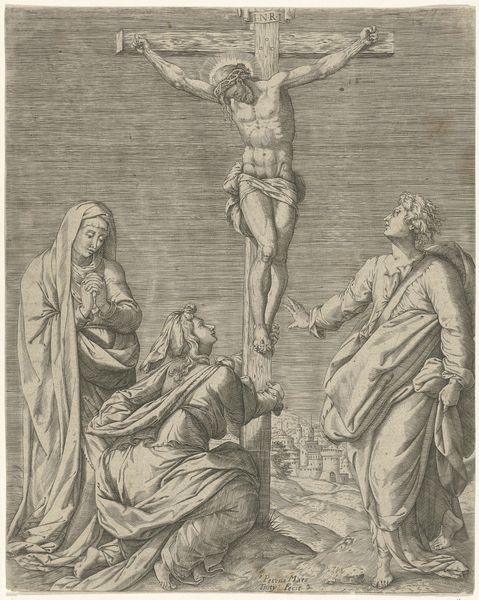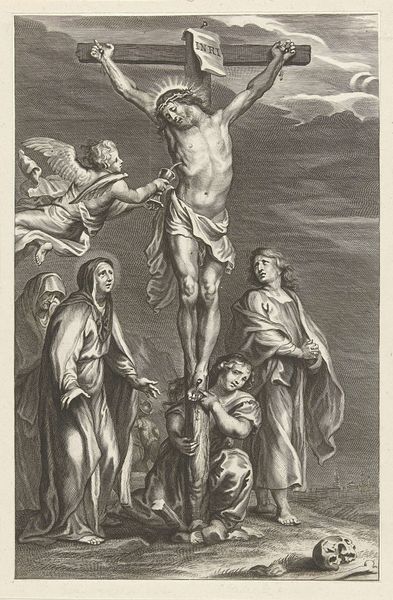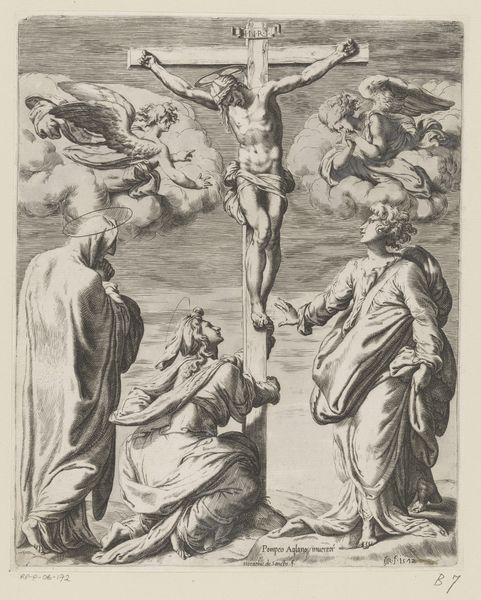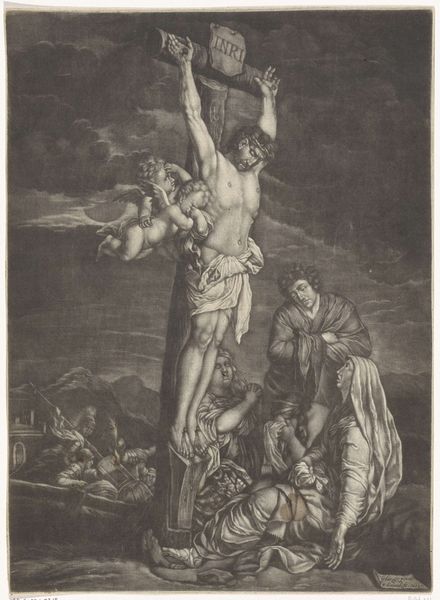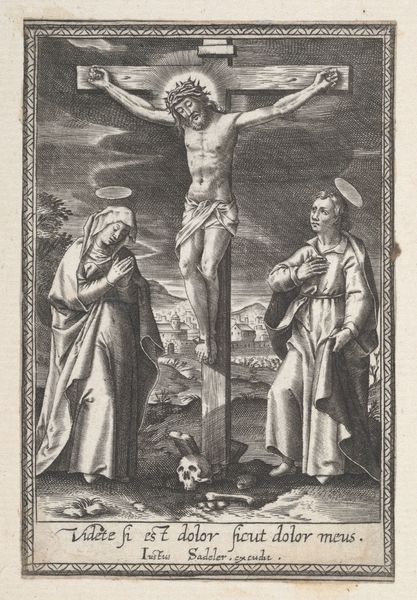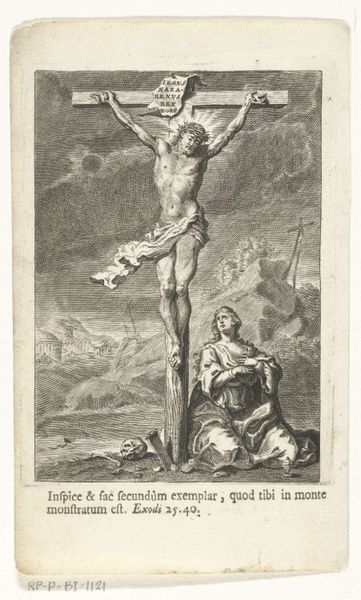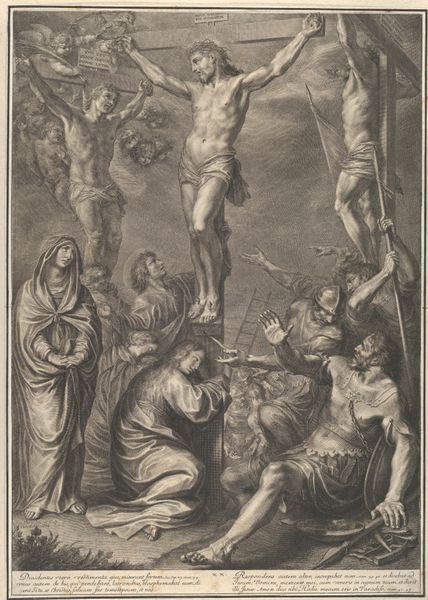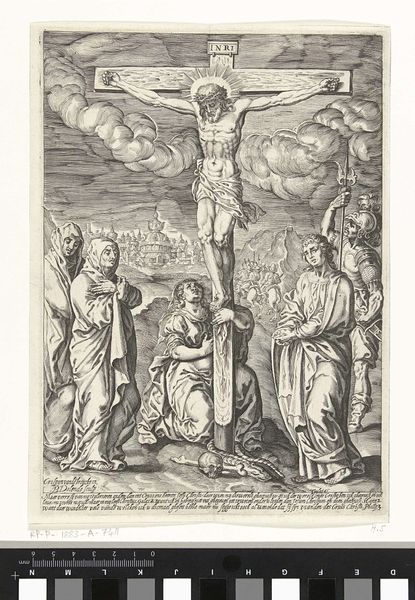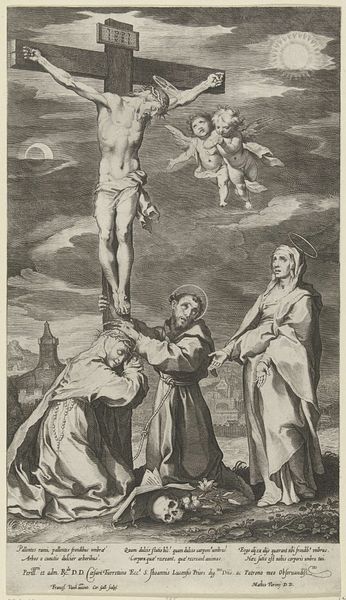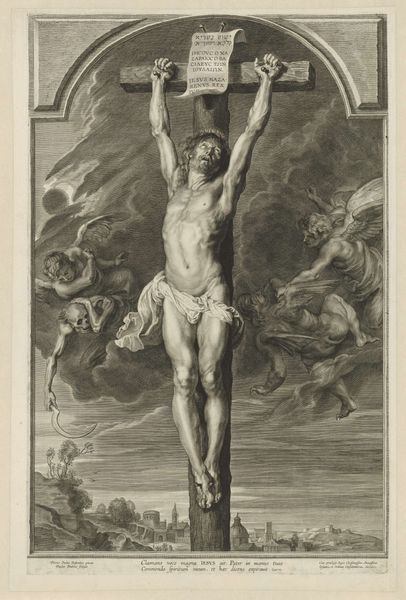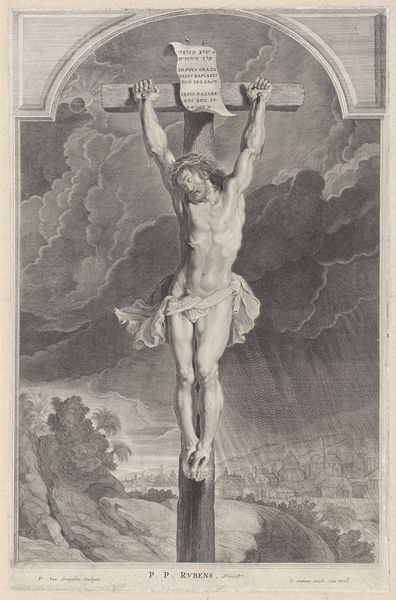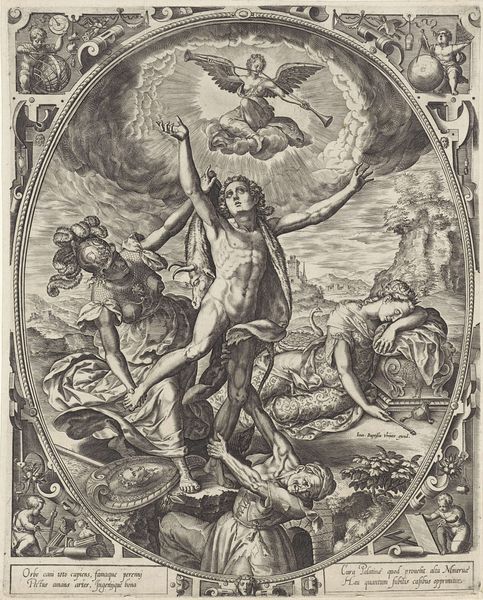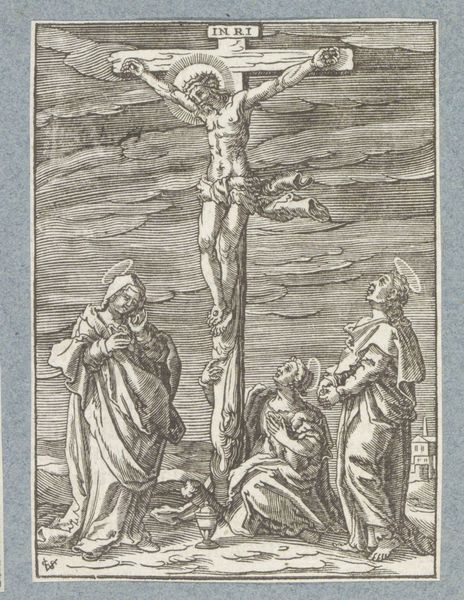
Dimensions: height mm, width mm
Copyright: Rijks Museum: Open Domain
Editor: This engraving, "Christus aan het kruis" or "Christ on the Cross", was created by Reinier Vinkeles in 1785. The use of stark lines creates a somber and highly dramatic scene. What is the cultural context that might shape our understanding of a piece like this? Curator: The piece belongs to the late 18th century, when the Enlightenment was questioning established authorities, including religious institutions. It's interesting to see a renewed focus on deeply emotive religious imagery during that time, wouldn't you agree? The piece evokes the Passion narrative while potentially serving other sociopolitical functions. How might the depiction of Christ's suffering play into debates about power, justice, or perhaps even revolution in the Netherlands at the time? Editor: It’s interesting to consider those aspects! I guess I tend to look at the piece as primarily religious in function. Curator: Perhaps. But the “public” role of this imagery is much broader, in the social contexts of its day. Engravings like this were disseminated widely, reaching a public beyond just a church context. Consider too, how artistic patronage, and the rise of print culture at this moment, shaped both the production and distribution of images. Editor: That's a really compelling way to reframe the engraving beyond just its obvious religious subject matter. Curator: Exactly! Understanding the socio-political atmosphere, and also the institutional mechanisms such as artistic patronage is the only way we can understand such works. This allows us to examine the political implications inherent to even seemingly traditional imagery. I have been pleased to show you its connection with this cultural moment. Editor: Thank you, I’ll think about art and its surrounding structures more analytically from now on.
Comments
No comments
Be the first to comment and join the conversation on the ultimate creative platform.
